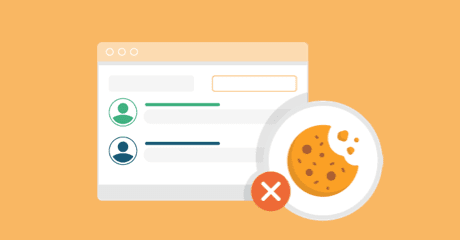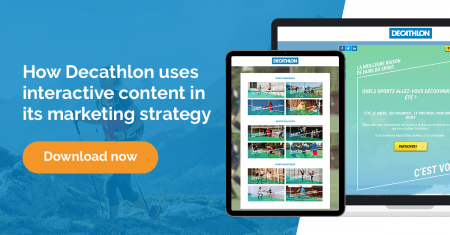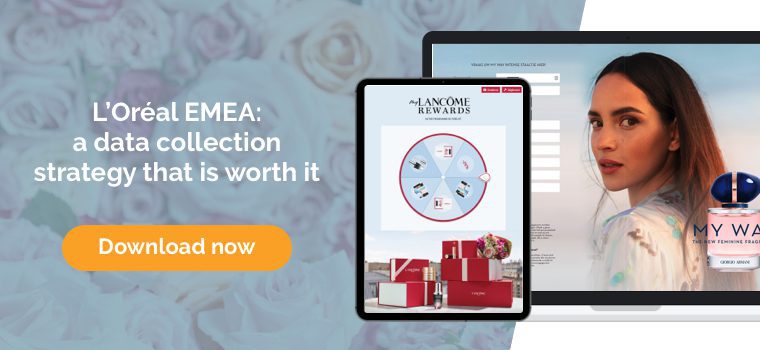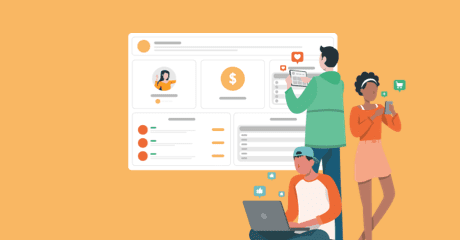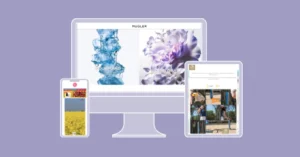Zero-party data: definition, best practices and use cases
What is zero-party data? And why is it on everyone’s lips at the moment?
Cookies, cookies everywhere 🍪! Every child’s dream (and, let’s be honest, probably most adults’ too) – a landscape of never ending cookies. Sorry to burst that sweet bubble, but we’re not here to talk about the butter and sugar kind of cookies.
We’re instead going to be talking about the most popular buzzwords to come out of the digital marketing ecosystem in the last couple of years and a whole bunch of different types of data: zero-party data, first-party data, the end of third-party cookies and data collection strategies.

So what is zero-party data?
And why does it hold such a key importance in the future cookieless world? Zero-party data is an innovative alternative to third-party cookies in the cookieless online landscape.
Therefore, having a well-structured and comprehensive zero-party data collection solution in place that uses the power of interactive marketing and gamification is essential for companies looking to bridge the gap left by third-party cookies.
Forrester defined it in their 2021 report “Now Tech: Zero-party data solutions” as: “Data that a customer intentionally and proactively shares with a company.“
How will Google cope a cookieless world?
Google has recently announced that they won’t be phasing out their support of third-party cookies in Chrome until 2024. They had initially said that they would be implementing this change in the online landscape by the end of 2022. Now, have explained their rescheduled cut-off date by saying that the ecosystem needs more time to get it right.
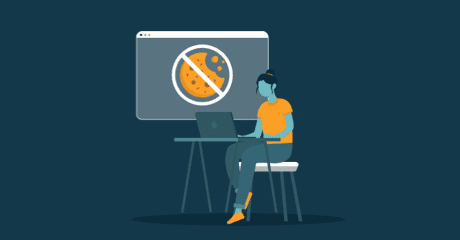
Google is confident in the progress made but needs to move responsibly, considering the best interests of all parties involved.
The most consistent feedback we’ve received is the need for more time to evaluate and test the new Privacy Sandbox technologies before deprecating third-party cookies in Chrome. [ … ] This deliberate approach to transitioning from third-party cookies ensures that the web can continue to thrive, without relying on cross-site tracking identifiers or covert techniques like fingerprinting.”
Anthony Chavez – VP, Privacy Sandbox
In the past, in an attempt to avoid the use of third-party cookies, brands have sometimes relied on inferring customer intent from their online behaviour. But coupled with the low accuracy rate of third-party data, it’s far from being an exact science.
Zero-party data enters the stage, providing companies with needed data while ensuring users are content with its acquisition and use.
Qualifio – who are we and what do we do?
Take 84 seconds to find out everything you need to know!
At Qualifio we are increasingly seeing that the brands that we work with, such as L’Oréal, DPG Media Services, Purina and Unilever are all aware of the importance of putting a data collection strategy in place. They’re also aware of the importance of organising their campaigns around key events throughout the year – our Marketing Calendar 2022 is the perfect tool to help them do this.
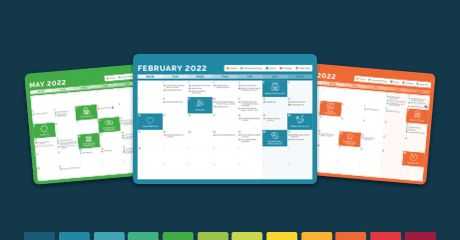
What are first-party and third-party cookies?
Before we dive into the cookie jar looking for the golden ticket of zero-party data, let me take you on a quick trip down memory lane to remind ourselves what cookies are, and where they came from.
A cookie is a small piece of code, a text file, that is stored in a user’s browser when they visit a website, it tracks the user’s movements on that website, collecting their basic background data.
Different types of cookies:
- 1️⃣ first-party cookies, that collect data that is then only accessible to the website visited by the user
- 3️⃣ third-party cookies. Advertisers and social media networks use third-party cookies shared between web domains to target the adverts a user sees based on the webpages they’ve recently visited.
⚠️ Curious to find out more about first-party data and how it is helping brands and media groups to better engage with their audience? ⚠️
Check out THIS ARTICLE that tells you everything you need to know
But where do cookies come from?
And why have they been making the headlines so much in the past few years?
A quick history lesson about cookies

Lou Montulli, an internet pioneer, invented website cookies in 1994 to help websites gain visibility on their visitors. Previously, no mechanisms existed for collecting this information. So before cookies, websites were basically deaf and blind, and completely disconnected from the users.
Cookies in themselves have never posed any kind of threat, but their use has become increasingly problematic, especially third-party cookies, as consumers’ awareness of their online privacy has increased, and they are now more concerned about how their data is stored and shared.
What are the data privacy regulations?
The pro-user privacy movement started with the digital world’s rapid expansion and increasing presence in our lives. This movement has led to significant legal shifts in the online ecosystem worldwide. For example, the GDPR came into force in May 2018, regulating the collection and processing of personal information in the EU. Additionally, the CCPA was introduced in January 2018, enhancing privacy rights and consumer protection in California.
Google, along with other major online players and regulators, has been collaborating to develop web technologies. These technologies aim to balance user privacy without jeopardising companies’ business models relying on third-party cookies for revenue.
Their goal is to give consumers more transparency and control over data usage, avoiding cookie replacements with alternative tracking methods.
And this is where zero-party data comes into play
Zero-party data is information that is hard to infer or buy from a user, in other words it is information that a customer voluntarily shares with a company. Seen by many as one of the most promising data collection solutions in a cookieless world. In other words: zero-party data is the way forward for brands.
Seen as a promising data collection solution in a cookieless world, zero-party data is the way forward. Having a well-structured and comprehensive zero-party data collection solution will help companies bridge the gap left by third-party cookies.
The key difference between first-party data and zero-party data is that customers generally supply first-party data as required information to make a purchase or access a service, such as name, gender, date of birth, and address.
Regarding Decathlon, they used a guide to help their audience to find the perfect end of year gift.
“We use the Qualifio platform to boost engagement via interactive content created at key moments of the year, which will enable us to collect strategic data, a preference, a wish that will help us segment our database, personalise our communications and ultimately build customer loyalty.”
Olivier Flament, Data & Direct Marketing Manager – Decathlon
Why is zero-party data so important?
Most consumers want to hear from the brands and companies that they like buying from and interacting with, therefore they’re willing to share their zero-party data information with them.
Benefits of collecting zero-party data:
- ✅ The data collected is qualitative and accurate as it has come directly from the source, from the customer.
- 🤓 The data shared by the customer is relevant, and tells companies how they want to be interacted with.
- 💰 Zero-party data is very cost effective, most of the time it’s already in a brand’s system, it just needs to be harnessed and used correctly. The customer has handed it over, it doesn’t have to be paid for.
- 🏰 Worrying about data protection regulation compliance will be a thing of the past, as the source and manner of collection of the data are known and secure.
Zero-party data vs first-party data
The difference between these two types of data is actually quite blurry and there isn’t a clear cut black/white answer. The reality is that both types of data are actually collected together most of the time, as they go hand-in-hand. If you’re collecting first-party data then it’s more than likely that you’re also collecting zero-party data at the same time.
Zero-party data and first-party data are the perfect companions when getting to know an audience better.
A user voluntarily shares zero-party data, which is hard to infer or buy. First-party data is required for purchase or service, while zero-party data is optional and willingly provided by consumers.
Zero-party data vs. first-party data: What’s the difference?
Let’s illustrate the difference between the two types of data with the example of a hotel reservation:
- First-party data: you provide your name and email address to confirm your reservation, you also sign up for their newsletter.
- Zero-party data: you specify that you’d like a room with a view on the lake, that you’re vegetarian and that you’re travelling for business.
What are the advantages for both parties after this exchange?
- the hotel know that they can contact you again. They have enough information to be able to personalise their future marketing messages to your preferences. They can also segment their database.
- as the consumer, you’ll have a better brand experience with the hotel than if you’d provided no data. They know your preferences, so they won’t send you generic messages; instead, you’ll receive something catered to your needs.
Everyone involved benefits in this win-win situation!
How to set up a zero-party data collection strategy
Having a well-harnessed zero-party data collection strategy in place will help brands to engage in a more meaningful way with their audience. Zero-party data allows the consumer to volunteer their intentions or preferences; Forrester gives the example of a brand of strollers asking their customers for their due date, to estimate when they would be making their purchase.
4 easy steps to create a zero-party data collection strategy:
- Acquisition. Align your data collection expectations with your marketing and communication strategy. You need to know the data type, its purpose, and the collection timing.
- Enrichment. Avoid any data silos by combining your existing first- and zero-party data. You’ve probably already got a lot of both types of data in your system. Make sure you’re combining both and maximising your usage of both types of data.
- Reinforce your conversion funnel. Clearly communicate the value exchange with your audience. If your community knows the benefits of sharing data, they’ll be more likely to share it!
- Customer loyalty with an omnichannel experience. Make sure that you’re collecting zero-party data from your audience across all the channels and touch-points you have with them. And then reward them for these interactions with exciting rewards and keep them coming back for more!
Collecting zero-party data can also allow brands to personalise their content for their users, without being creepy and in-your-face. Customers who are willing to partake in a personalised experience will have the opportunity to share their data, with the value exchange with the brand being transparent and valued by both parties. Consumers who would rather not share any data will no longer experience the inconvenience of sometimes misplaced targeted content.
Understanding consumer expectations helps brands create personalized content and build meaningful relationships with their audience.
L’Oréal – a data collection strategy that’s worth it!
Additionally, customers sharing their zero-party data with a brand will enable them to gauge their trustworthiness amongst their audience. The more consumers share and exchange with a company, the more they trust them to keep their data secure.
L’Oréal is the perfect example of this, they’ve created a global data collection strategy for the majority of their brands, using Qualifio’s interactive campaign formats and focus on first-party and zero-party data. By collecting and efficiently using zero-party data from their audience, the brand is able to provide them with personalised experiences, both online and in-store.
Companies investing in a zero-party data strategy for digital marketing need to figure out key points before starting.
They’ll need to establish:
- 👤 Which of their data points would be improved with personalisation, and whether additional ones are needed?
- 🔄 What does the ideal data exchange with their audience look like?
- 🕑 When are the right moments in the user experience to ask for zero-party data?
Make sure that data collection is a value exchange
It is important to not overwhelm users with questions from the moment they register. A spread-out approach maintains the balance between improving user experience and keeping it pleasant. Establishing a value exchange with your audience is essential as users will be more willing to share their data if they get something in return.
Another key element to take into account is to only collect the data that you’re going to use. Brands should ensure that they incorporate pet owners’ information, such as their pets’ type, into their content sharing processes. There’s no point sending a rabbit owner information about dog food for example!
Currently, many zero-party data solution suppliers offer services to companies enriching online interactions with their audiences. Having a clear idea of audience engagement goals is crucial before discussing the best-suited solution.
How to collect zero-party data
The need to have a well-thought out and executed zero-party data collection strategy in place will have a varying impact on different sectors, with registration being one of the most common ways in which to collect zero-party data. Others include email or website preference centers, interactive formats such as quizzes and games, loyalty cards in-store, and social media polls.
With the clever use of a form for Retail brands
In a retail environment, having good quality data is essential as consumers will typically be willing to share their information with a company, with the expectation that doing so will reward them with a better shopping experience. In the baby sector, companies can ask customers to share information about their child, enabling them to share tailored content.
For example, a list of gadgets and clothes the new parents will need if they’re having a girl in winter. Pet food companies apply the same principle, asking customers about their pet’s type, breed, and age to provide relevant content.
Purina, for example, asks their customers what breed of dog they have and how old they are, so that they can send them the appropriate coupons and newsletters. Qualifio collaborated with Nescafé, adding a form field to personalize the audience’s relationship based on their usual product preferences.

With newsletter opt-ins and interactive advertising formats for Sports clubs
In the sports industry, data is increasingly playing a vital role, and it’s not just the player’s performance data on the field. Fans’ data now impacts sports bodies’ marketing strategy off the pitch.
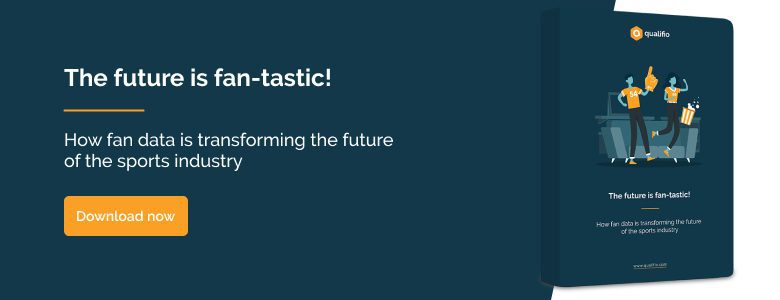
By collecting first-party and zero-party data, a club can better understand its fanbase and their needs. This will then allow them to tailor better experiences and can mean big business in terms of sponsorship revenues. To say nothing of the sense of community and belonging they’ll be creating, encouraging the sense of loyalty from fans.
For example, when trying to generate revenue from sponsors, it is crucial for clubs and organisations to have a well-harnessed first-party and zero-party data collection strategy in place, as sponsors will be highly favourable towards a club that is directly in touch with their fan database and knows what they expect and need.
Have you ever wondered how new digital technologies are shaping the future of the sports industry? How does data, especially zero-party data, play a key role in sports clubs’ preparation for the cookieless world? Then make sure you download our ebook “The future is fan-tastic” and find out how major European football clubs like LOSC, Valencia CF and Toulouse FC are placing interactive marketing and data collection strategies at the heart of their marketing activities.
Sport industry success story collecting zero-party data
Spanish La Liga football team, Valencia CF, have placed zero-party data collection at the heart of their digital strategy. The club uses the Qualifio Engage platform to reach four of their marketing goals:
- 👥 Grow their database by collecting new opt-ins for their newsletter.
- 👂 Get to know their fans better by collecting valuable insights and feedback from them.
- 💰 Increase their sponsors’ visibility by including interactive advertising formats in their offering.
- 🤩 Engage with their database thanks to fun and interactive campaigns.
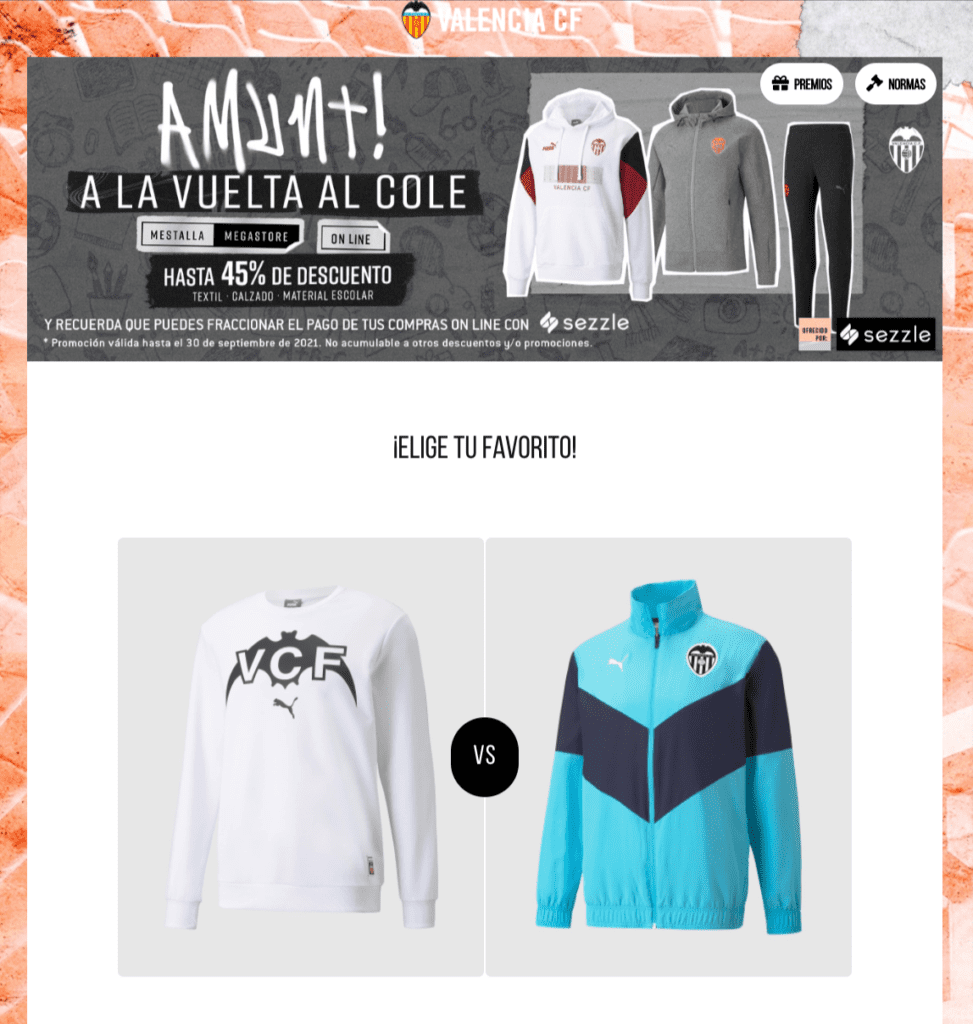
With a quiz and account creation for Media groups
Publishers and news outlets recognize the data-driven decade, where prioritizing user needs over publishers’ is crucial. With former Times and Sunday Times head of digital Alan Hunter saying that:
“The publishers that do follow the data will succeed and those that don’t I’m afraid will not, they will wither and die.”
For radio brands like NGroup, having logged-in users is key to transforming anonymous visitors into identified listeners. Listeners’ consensual preferences enable stations to determine the best interactive, clickable, and original content for their websites. This encourages users to register, log in, and sign up for newsletters and other content.
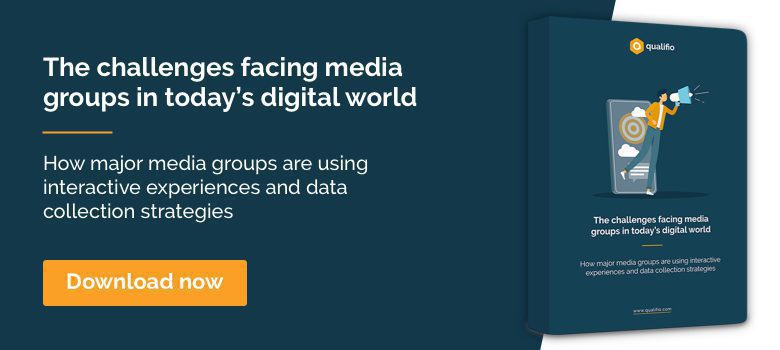
In the media and digital publishing industry, preparations for the cookieless world have progressed, but more work remains. As highlighted by Teads, following a survey they carried out:
What’s most encouraging is to see that publishers are making changes to insulate their business models from external factors. By focusing on quality content and 1st party data, they are giving advertisers the best possible opportunity to buy sustainable media that delivers real business outcomes. It’s a very exciting time for publishers.”
If you’re curious to find out more about how the end of third-party cookies is going to be affecting the media industry, and how major European media groups like Vocento, NGroup, Bonnier and RTL are preparing for the cookieless world, make sure to check out our ebook “The challenges facing media groups in today’s digital world”.
Want to discover other inspiring campaigns created by our users?
Get our all-time favourite campaigns catalogue!

How Qualifio can help with zero-party data collection
Helping brands and media groups to collect first-party and zero-party data from their audience in a fully transparent and GDPR compliant way, and then being able to make the most of this data is what Qualifio does, by giving these companies access to the marketing to easy-to-use tools that require very little to no technical IT knowledge or coding.
Qualifio offers 50+ interactive marketing formats for brands to engage and collect data across all digital channels.
The end of third-party cookies
In our ebook about the end of third-party cookies, Qualifio’s co-founder and Chairman of the Board, Olivier Simonis, wanted to reassure brands:
Your brand is strong, attractive and in possession of a lot of data. Stop relying on complex, non-transparent AdTech ecosystems and be creative. Context and content are kings. You don’t need tons of data: start making better use of the data you already have access to – that will already be a challenge! Understanding the consumer who is tired of not knowing where their data is stored and how it’s being used is the best strategic and long-term strategy you can embark on”.
What about loyalty?
To further the conversation, Qualifio has recently added a new module to their offering: Qualifio Loyalty. We believe that customer loyalty should be based on and should reward all the interactions that a user has with a brand. By asking themselves the question, “what is brand loyalty?” and then when considering how building customer loyalty might help them with their first-party and zero-party data strategy, brands and media groups are taking the next crucial step on their digital journey. They make the most of precious data collected from their audience, furthering their relationship.
Perfectly compatible with the Qualifio Engage module, and just as easy to set up and manage, the Qualifio Loyalty module allows brands to set up creative and innovative loyalty programs that are based on interactivity and engagement. Take a look at a couple of campaigns to test out the new module and explore this exciting platform.
How to track data in a cookieless world?
In a cookie-less world, brands must rely on collecting first-party cookies and zero-party data from their audience. The key to their success will lie in how effectively they can do this. The data is usually readily available but it needs to be harnessed and used correctly. Companies need to keep a few main points in mind to be successful:
- 📖 really consider and plan how the data will be used
- 🚫 don’t waste it
- 🤯 don’t overwhelm the consumer
- 🫶 and remember that the relationship they’re building with their audience should be based on honesty and transparency.
Zero-party data collection should be a carefully considered and collaborative marathon, not a rushed, energy-wasting sprint. Zero-party data solutions are clearly the way forward in a cookieless world.

Over 50 interactive formats to choose from for your marketing campaigns!




